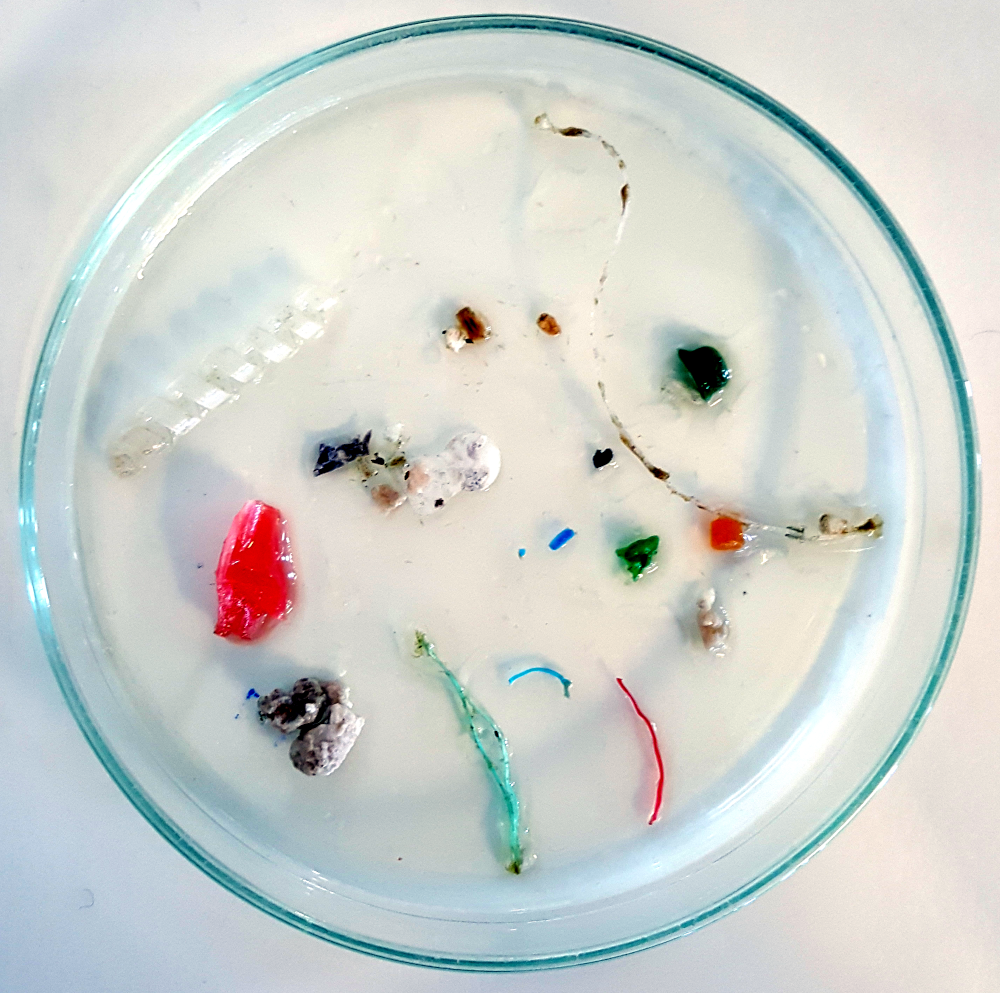The weather is beautiful off the Portugal coast right now, and we’re having lots of sampling success. We just finished deploying various nets to sample microplastic particles, zooplankton, and gelatinous zooplankton.
The net sampling starts with this 1.5m diameter WP3 net. The net is dropped to 100 m, and towed vertically to collect gelatinous zooplankton (jellyfish, if you will) and their ingested microplastics.
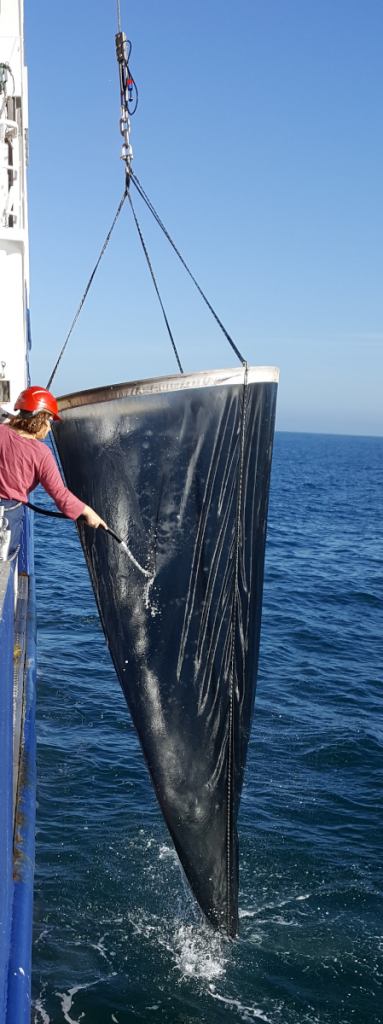
Next, we tow a Bongo net, which consists of two nets side-by-side. The nets are towed laterally for about 30 minutes at 50 m depth. These collect suspended particles and zooplankton.
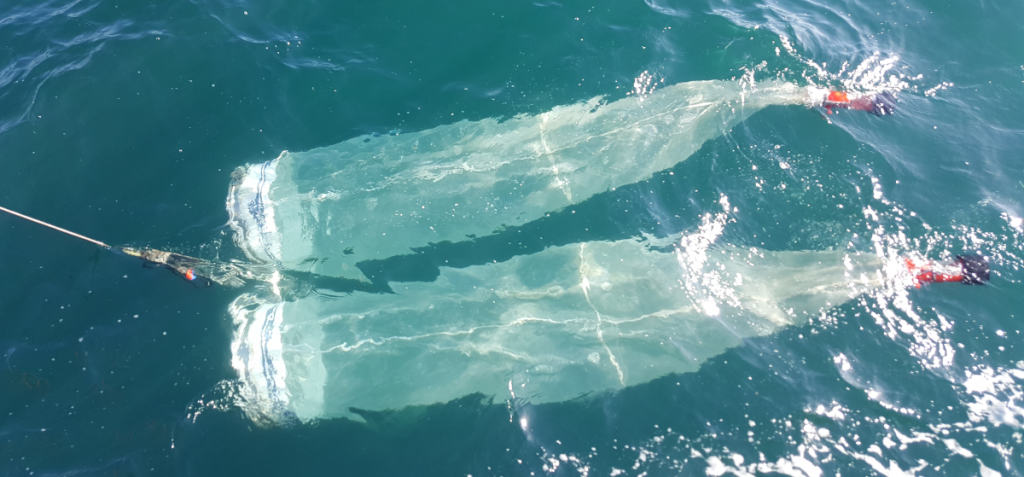
Finally, we tow a catamaran trawl, which floats on the sea surface and scoops up floating particles and zooplankton down to about 30 cm depth.
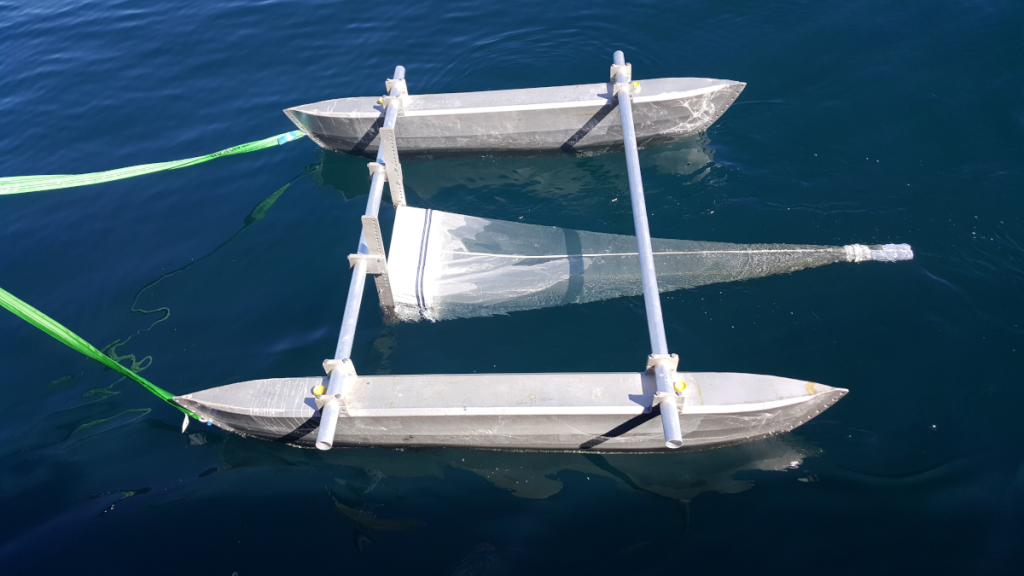
Most of the net tows are full of zooplankton (like these blue copepods) and a few juvenile fish.
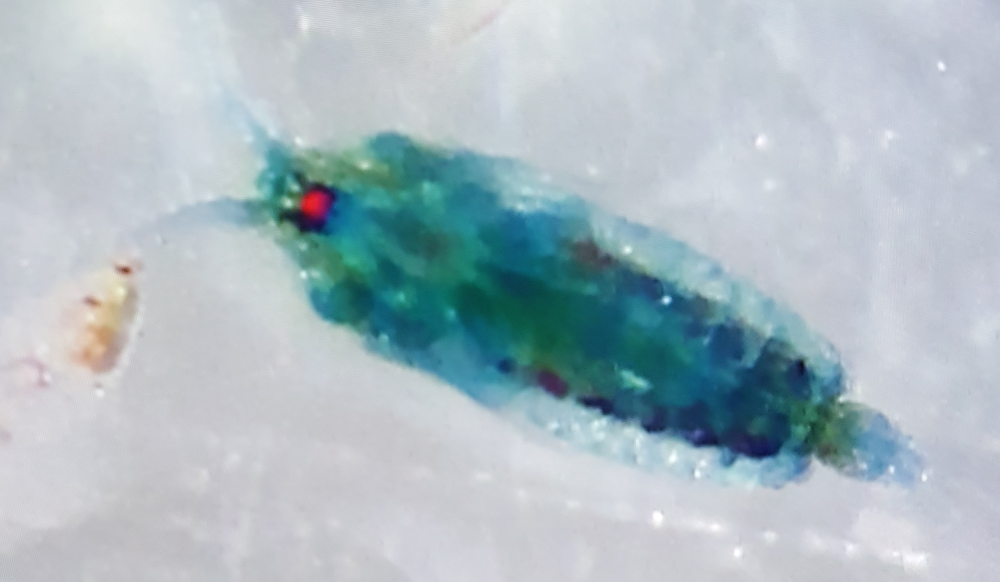
The second catamaran tow today passed through an accumulation zone formed at the sea surface by Langmuir circulation. These zones are easy to identify because they form long lines of foam, algae, sticks, and other floating debris. That net tow sampled a variety of mm-cm sized plastic fragments of different colors, shapes, and types.
